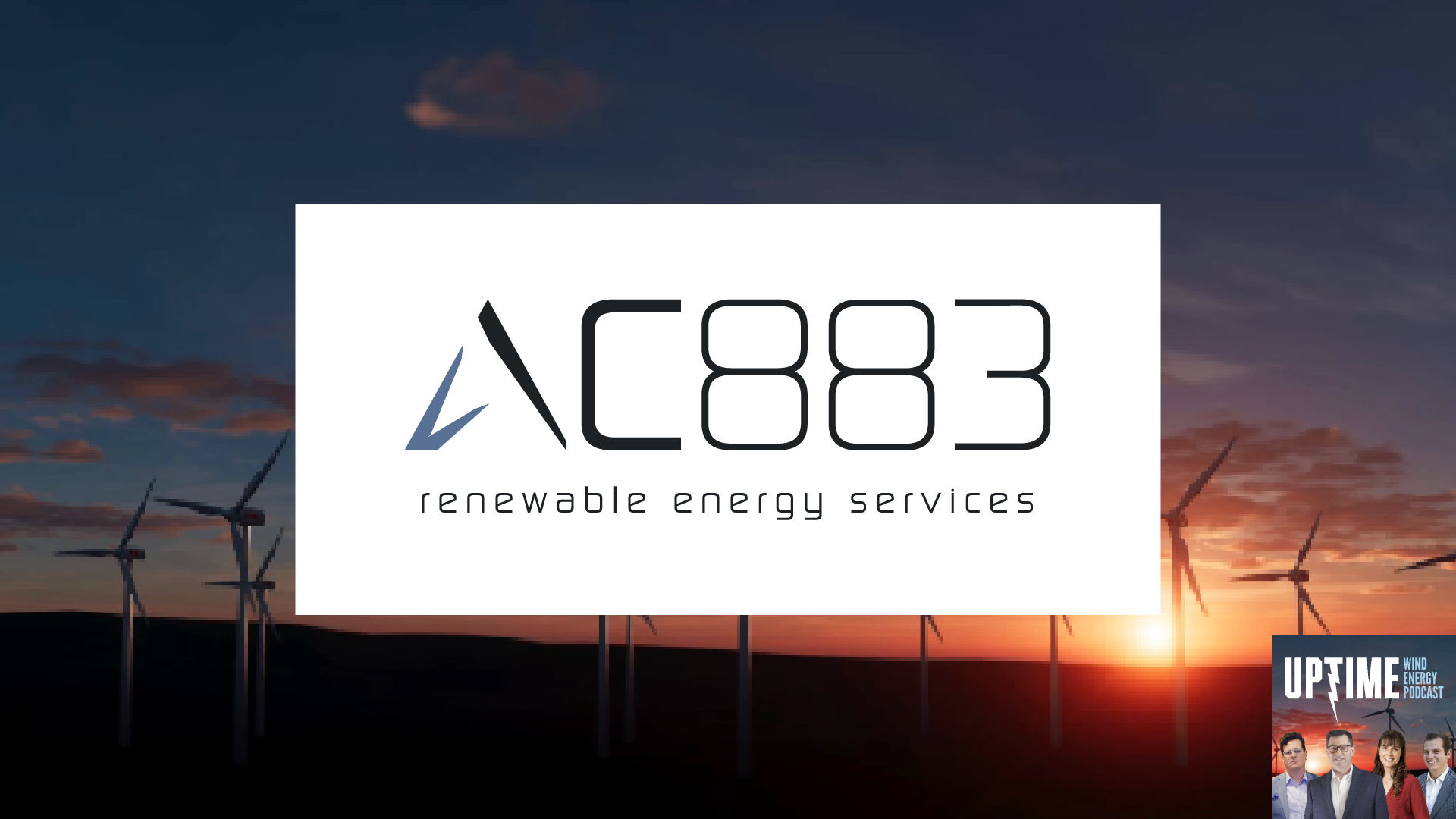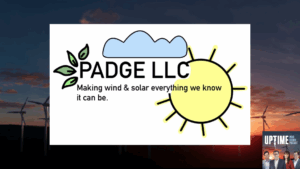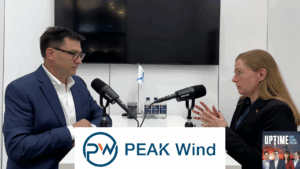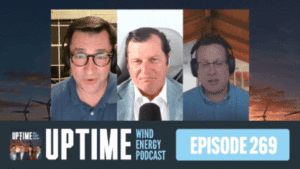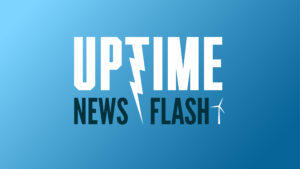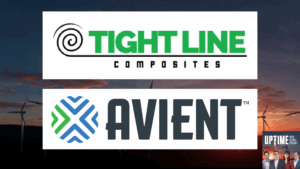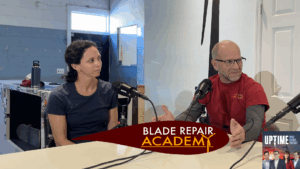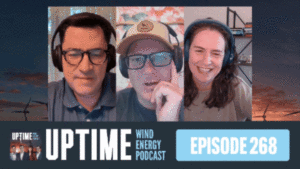Podcast: Play in new window | Download
From the surge in lightning strikes damaging wind turbines to the game-changing potential of nacelle-based LiDAR systems, Lars Bendsen of AC883 shares insights on wind farm maintenance. Lars describes how LiDAR installations can boost power output by 3.5%, and warns how ignoring simple pitch alignment issues leads to catastrophic turbine failures.
Fill out our Uptime listener survey and enter to win an Uptime mug!
Sign up now for Uptime Tech News, our weekly email update on all things wind technology. This episode is sponsored by Weather Guard Lightning Tech. Learn more about Weather Guard’s StrikeTape Wind Turbine LPS retrofit. Follow the show on Facebook, YouTube, Twitter, Linkedin and visit Weather Guard on the web. And subscribe to Rosemary Barnes’ YouTube channel here. Have a question we can answer on the show? Email us!
Pardalote Consulting – https://www.pardaloteconsulting.com
Weather Guard Lightning Tech – www.weatherguardwind.com
Intelstor – https://www.intelstor.com
Register for Wind Energy O&M Australia! https://www.windaustralia.com
Lars Bendsen: Welcome to Uptime Spotlight, shining light on wind energy’s brightest innovators. This is the progress powering tomorrow.
Allen Hall: Welcome to the Uptime Wind Energy Podcast Spotlight. I’m your host, Allen Hall. Today, we’re diving into the costly challenges plaguing wind farms with Lars Bendsen from AC883. From a surge in severe lightning strikes to devastating turbine misalignments, Lars reveals why seemingly minor issues can lead to catastrophic failures, and how cutting edge solutions like nacelle based lidars are transforming maintenance strategies.
Plus, discover why Lars believes too many industry tourists are making decisions that cost operators millions in unnecessary repairs. So get ready for a no holds bar discussion about what’s really happening in wind farm maintenance. Lars, welcome to the Uptime Wind Energy Podcast Spotlight. Thank you so much.
Appreciate it. Well, you’ve had a busy blade season and you’ve had crews all over Canada and parts of the U S what kind of problems were you solving with your blade crews this year?
Lars Bendsen: That was, that was a crazy repair season. Um, and it’s not to feed directly into, but it, we had a ton of lightning strikes and lightning repairs higher than I would say the average.
And some of the strikes were severe. So I don’t know, uh, you probably know better than me if the weather pattern has been leading up to better or worse. Um, what we do know, we had a really, um, wet summer. We had a ton of weather delays. We had a ton of high winds. We have a ton of rain. Uh, so we had our, our standby time, time was, was higher than usual.
And it’s annoying for everybody involved. Owners don’t get their job done and money is flying out the window. So. And we don’t get the job done either. So, so, so it’s really wet that way. So I don’t know if that’s the aftermath was going on over the winter. I have no idea because you can’t really see when this like was there.
Uh, and, and the owners, the owners have a system that can measure when it comes. But. I don’t think they’re looking at it.
Allen Hall: That’s, that’s true. Uh, we are seeing more lightning strike damage over this past summer. It’s been really bad. I, I think it’s just the, the set of storms that came through. But in, in your case with AC 8A3, when you have technicians on site, you’re bringing high quality sort of apprenticeship plus technicians that have a lot of training so that when you get into these complicated repairs, you can actually accomplish them properly.
Lars Bendsen: We are, we are getting our people from mostly from Europe, uh, simply because there’s no cable, there’s, there’s no, uh, availability for, for staff in Canada. Uh, so we get them in from Europe on a proper work permit, simply because we are short staffed. Uh, we do pay more. We also get, uh, GWO certified technicians, all of them.
And, um, last year we had about 60 percent that could do. Cat 4, Cat 5. Next year they’re all doing Cat 4 and Cat 5. That means on some simple LEP work we could maybe be either be earning less. Or we might be a little more expensive on regular LEP work because it is highly trained technicians. Uh, we learned from last year based on the percentage of Cat 4 and Cat 5 damages.
We simply need to have more flexibility so we won’t, we will only have Cat 4 and Cat 5 technicians.
Allen Hall: Do you think there’s more Cat 4, Cat 5 damage lately? Because that’s what I think. I’ve seen a lot more
Lars Bendsen: over the last couple years. From, uh, from, uh, 23 to 24 there’s a significant increase. Uh, if it’s really high, uh, lightning strikes, uh, damages from tailed headspin, everything.
Allen Hall: Yeah. Is that driven by just the lack of understanding that what looks like to be maybe a small pinhole in a blade is really much larger and the operators don’t catch it early enough or is there other factors involved there?
Lars Bendsen: I don’t know. I think it might be that, um, I mean, everybody knows that all the engineering departments are all owners.
are really lean or in best case lean, but mostly understaffed. So that means the poor guys, they are struggling to keep up with everything. They can’t see it. And, um, and, uh, I have, I have a strong, I think I have a strong opinion about the drone inspection all the time, because the AI and the pictures, it’s, it, you cannot run an autopilot.
You cannot just take a picture, see that’s it. You can’t, you simply have to get up there. We had minimum Minimum of 10 blades were simply just a grease spot that was categorized as Category 4. We also had the opposite, where just a grease spot was actually a lightning strike. So we had it, we had it all over the place, so you cannot, you cannot run an autopilot.
Allen Hall: That’s interesting because I, I’ve heard that same discussion from a couple of operators about whether the drone inspection categorization has been correct. But I think as the lightning strikes, uh get more frequent. We’re seeing what looks to be smaller damage further down the blade, which would typically be grease.
If you, especially as you get closer to the root of a blade, you always think, well, that’s grease from inside the nacelle that’s fallen onto the blade. Don’t worry about it. But in reality, I think we’re seeing more lightning strike damage in more critical areas that lead to this cat four and cat five issues.
Lars Bendsen: Well, uh, you’ve seen it very often as well. It’s a small lightning strike. Once you start opening it up, then you are 16 layer deep. Just an example, right? So we had some of them that looked very small and then you’re ending up in a 78, 000, 100, 000 bill, right? Even though it looks very small and therefore, yeah, good.
No, I’m just saying, that’s why I don’t, I personally, I know it has a ton of opinion about it, but I personally don’t think you can run on autopilot, which also go back to the, you know, we’ve been involved in robotics as well, robotic repair and all that jazz, and I know there’s a place in the market for it.
Absolutely. But based on our experience, pure LEP and nothing else is only having, might be 10 percent of the blades. There’s always something to look for. There’s always an extra damage. There’s always something. So we have to get up there anyhow.
Allen Hall: Is that because the industry for the longest time has only inspected like a third of the farm at a time.
So it’d take three years to really get across the whole site. So if you did have damage. It may have sat there for two years before anybody even could identify it. Isn’t that changing a little bit though, that meeting operators that are doing a lot more inspection and trying to catch these ideas, you know, these problems early?
Lars Bendsen: No, and I, I agree. And I, I agree. And during the drone inspection, do drew your whole fleet every year? Just do it. It’s, it’s, it’s, it’s, uh, it’s peanuts compared to whatever, but on that said, I think it’s great with drone inspection, but you cannot rely on a hundred percent outer pilot. Somebody has to look at it.
With qualified eye to look at it. And it’s better to climb one, one blade. Too many than one, too less, too little, so.
Allen Hall: So the question in my mind when it comes to lightning damage up in Canada is because it’s so cold and there’s so much freeze thaw that happens. As part of the issue that once you have this wound in a blade that just the freeze thaw over a year or two can really expand it and then cause trailing edge separation and all those sort of horrible things that happen to blades?
Lars Bendsen: Well, I guess as soon as you get more intrusions, uh Uh, then of course, uh, up here, uh, water had a chance to get stiff under zero degrees C. So, uh, so of course then you have a, uh, have an issue.
Allen Hall: That leads into the discussion about, well, it’s cold in Canada, which means you guys get the winter first and then it comes down our way, uh, because we’re getting close.
Which then gets me into, it’s pitch alignment and sort of yaw alignment season for you. Because it’s nice to have the fields sort of knocked down and everything frozen. Pitch alignment is a huge problem and what balancing is a huge problem too. What are you seeing out in the field right now?
Lars Bendsen: Well, I’m seeing that owners relying on OEM statements that we can, we can do a.
We can do pitch correction without control, we can do x factor, we can do automatic, uh, yaw alignment, which is, um, which is questionable, when put it that way. And, um, I said, uh, my new word is, uh, there are so many tourists in this, in this industry. They’re tourists. They simply don’t know what they’re talking about.
They come and look at it. It looks nice, but they actually don’t know what they’re talking about. A yaw alignment is one thing, but say we can correct your yaw alignment. No, you can’t, because you can static align your turbine. But turbines are misaligned differently in different wind bins. So you need a dynamic alignment.
Yaw alignment, not a static yaw alignment. And the only thing you can do is static, you cannot do any dynamic yaw alignment. Um, very simple, uh, just to give you a, just a brief, I mean the, the, the equipment sitting behind the rotor, that means the, the anemometer, uh, cup anemometer, sensor, whatever you have, is sitting behind the rotor.
That means it’s sitting in turbulent, in turbulent wind. And it’s always chasing whatever has happened already. They get the information later and then try to chase the wind. Uh, there are some OEMs that don’t, because also you cannot yaw yaw bearings and brakes, et cetera. So but there’s also some OEMs that they’re allowing up to 7.
9 degrees before they do anything. And then they have, you know, uh, when you boil an egg, you have a watch that’s starting and they have a counter for 30 seconds. If it stays above 8 for 30 seconds, they start yawing back towards zero. And that’s the better one of them, they’re doing that. So that’s the, that’s the dynamic yaw alignment that you need to have.
I have no, we have no stake in LIDARs per se. We know them, we work with them, but we don’t have any monetary stake in it. Uh, but you need a Nacelle based LIDAR, basically, if you want to run optimal. That means you’re measuring 80 meters in front of the turbine in a clean airstream, that you get a way more accurate.
Uh, well wind speed and, and wind direction measurement. And then you connect that to controller and then that control your yoing, your yours. You’re not changing any, your strategy. You’re still doing the same. You don’t overdo the yawing. You just wanna make sure that you have a more accurate read on speed and direction where scan feeds into your pits.
Allen Hall: Yeah. Let, let’s, let’s talk about lidars for a minute because, uh, I know you and I have had a couple of discussions about Lidars. I don’t see them used very much in the United States at the moment. Uh, because I don’t think people really understand them, of what the, how they can use them for operational purposes, I, I think they see them as sort of a calib, kind of a calibration issue, and then once they’re done, they’re kind of move on.
But you’re saying that the LiDAR can really improve your operational performance.
Lars Bendsen: Oh, absolutely. Uh, you have, of course, I think it’s misinterpretation because there’s only, basically only one supplier of nacelle based LiDARs. There’s a ton of ground based LiDARs. There’s measuring up and kind of measuring in a cone when you do site assessment.
And that’s totally good for that. But this is a nacelle based LiDAR. Two beam. They can also get into four beam so we can measure wind shear. But for operational purposes, it’s actually more to get the wind speed and wind direction more accurate. And that is connected to the controller. With a, it doesn’t matter which controller, and that means that will do your, uh, your alignment in each wind bin.
Allen Hall: Okay, so the LiDAR is acting as an alignment tool constantly to try to correct for what the OEM equipment didn’t
Lars Bendsen: do. It’s kind of a third party, uh, call it, uh, anemometer just measuring 80 meters out in front of the turbine. And it does, and it does more accurate because it is laser basically, right? Right.
Right. Right.
Allen Hall: The implementation of LIDAR on turbines is what? Does every turbine have a separate lidar, or is a LIDAR good for a couple of turbines around it?
Lars Bendsen: No, you do. You do it on every single turbine because you cannot remote control. You cannot remote connect to every turbine’s controller. We had to be connected to the, to the controller.
And it’s very simple. We do a two turbines a day, so it’s not a big thing to do. It takes a couple of hours to get it aligned, connect to the controller. It’s very simple, actually.
Allen Hall: What does that process look like? Because now you got me curious. I’m taking, I’m taking this LIDAR unit. I’m bringing it up tower.
I’m mounting it to the top of the nacelle. I’m maybe doing a little bit of alignment to get it. Focus in the right place. And then I’m plugging that into the SCADA system, the control system? In
Lars Bendsen: the
Allen Hall: controller
Lars Bendsen: itself.
Allen Hall: Oh, in the controller itself.
Lars Bendsen: Yeah, and it’s a failsafe system. It’s running on different bus connections.
It’s too technical, also for me. But it’s a failsafe system, so if something goes wrong with the LiDAR, or the LiDAR can’t see heavy fog or something like that, then it goes back on the controller. on their own original anemometer. So it’s not, there’s no danger to it. Um, right now we have huge success on, uh, V82 in the US and Canada.
Um, the V82 is a bit of a different animal because it’s a stall regulated turbine. Uh, but again, uh, I talked to a colleague of mine said, well, that guy should change the, uh, the algorithm. He was not, he was not working that day. So, uh, so, so it’s not, it’s not very accurate. It’s not. Uh, so that’s one thing.
So V82 specifically, and also an interesting is that when a V82 running above radio wind speed, it very often come up with an alarm and shuts down. Alarm 236 or whatever it’s called, the flap wise, so it simply shuts down in high wind because it’s running at over speed because it’s only stall regulated.
So, What we are doing is running down on a ton of vibrations, that’s why it stops. So, um, so we are misaligning the turbine on purpose above radio wind speed. Below we are running as close to zero as we can. But above rated wind speed, we are misaligning the turbine. That removes the, uh, the vibrations and we also have a less load on that turbine.
So we’re actually opposite what you normally would think.
Allen Hall: You can produce more power having a little bit of an offset because the turbine doesn’t shut down.
Lars Bendsen: And we have now on, um, we have of the more than 200 turbines we have outfitted in Canada and the U. S., we are seeing, uh, we’re seeing, say, AP gains of 2.
8 to 3. 5 percent AP. And that’s without the extra uptime. That is just because of AP power. That’s remarkable.
Allen Hall: Getting 1 percent today can be a lot, because the turbines are usually pretty good, but if you can squeeze out more than that, that’s remarkable. Where is the LiDAR generally used at? What kind of farms be interested in LIDAR.
Is it kind of ridgeline farms or the wind can be a little more unique or is it in the flat plains of Kansas and Oklahoma and Canada?
Lars Bendsen: Well, of course, the more, the more obstacles you have in front of your turbines, the worse it gets. Uh, I’ve seen down in Mojave Desert, actually, on, on, on the side down there, the turbines on the same side are basically 90 degrees.
Misaligned from each other, but they’re both right. They’re, they’re well aligned, but of course the wind is simply coming around like that. So it looks weird when you’re driving there. They’re 90 degrees different or they the same wind farm, but they’re both correct. Aligned.
Allen Hall: Yeah. I would say something is wrong.
Stop the turbine. But yeah,
Lars Bendsen: but no, they’re both right. . So, uh, but that’s, that is really, so that’s, that’s one thing I think is the critical, we talk about maintenance. The, uh, the, the, um, again, back to my old phrase that some of VM have bored. The rotor is the motor, and it means if the rotor is not aligned in pitch and yaw, mass imbalance, et cetera, then you’re paying for it.
Allen Hall: That makes a lot of sense then. So knowing more about the wind with LiDAR has a, what kind of ROI is that on a LiDAR system?
Lars Bendsen: Well, depending on, uh, what market you’re in on the AP or the PPA, of course, right? So, so that’s depending on, but, uh, but we have seen less than a year. We also seen, uh, depending on, uh, what you’re in, right?
What is your, uh, what is your, uh, your factor up to your capacity factor, your PP, et cetera, so it’s not a, it’s not a, uh, one size fits all we have to look at it and, and make smart decisions, right? Boy,
Allen Hall: any ROI less than a year, I want to get involved with.
Lars Bendsen: This will actually get fired for not doing it.
Allen Hall: Right. You should. That’s too easy. Yeah. It sounds interesting. So let’s, let’s bump into pitch alignment and unbalanced rotors, which are very prevalent. Joel and I were traveling across Kansas and Oklahoma and Texas quite a bit this year. It’s fairly easy to see rotors that are imbalanced or that they’re just not, you can tell because there’s a little bit of wobble going on there.
Yeah. And often you can hear it. You can hear it. Yes.
Lars Bendsen: So what is the solution for that? How do they fix it? Well, first of all, we have to measure if it’s imbalanced and, uh, if, if it’s, uh, if it’s aerodynamically balanced or not. That’s, that’s number one. Let’s figure that out. Do we have the same pitch angle?
Regardless of what it is, it has to be the same. And it has to be the same all the time. Actual pitch or not is to be the same. So, uh, and they’re not, um, based on, on our, we had done more than, I think we had 2, 500 turbines now in the US and Canada, and, um, based, based on age of the fleet and also the, the, the manufacturer, it’s, uh, it’s, it’s crazy And, and people, they know it, but they don’t do anything.
And that’s where back to what I said before, but we have too many tourists in our industry, so the decision making, right? So I’m just took my note here. Uh, we talking to, to, to an engineering department. They understand it. Engineering and no money. They just, they just have to nod. Yeah, it’s good. Passing it down to the site, site looks at it.
They think it’s a great idea too. Now they have to sell it to either director of operations or asset management. Some director of operations, they understand it. But if you have money now, we can’t put it on import because that’s already cut in. So it absolutely Zero fat on that bone. There’s no money left for anything, projects like that.
And then sometimes we go to the as a manager, which might be often, or sometimes it’s a commercial, or you’re the person, less technical. And that’s where, that’s where the tourists come in because they simply don’t know technically enough about it.
Allen Hall: Well with an unbalanced rotor, It’s an almost inevitable.
You’re going to destroy a main bearing set. You’re going to probably take down a gearbox with it if you let it go on long enough. And in some of these cases that I’ve heard, the control cabinets are moving around so much that they’re damaging the control cabinets. At what point do you say it’s worth, I can’t replace control cabinets anymore, I’m just going to do a pitch alignment and be done with it.
It seems like an obvious choice.
Lars Bendsen: Sometimes what we have seen on, especially hydraulic pits, that it’s not as bad as you think, it’s way worse. So, um, we have had a customer change the cabinets. Three or four times a year. And they don’t know what it is. They just have vibrations. So now they buy vibration sensors.
Now they’re looking at extra bearings for the gearbox. Now they look at all kinds of stuff without looking at the front of your rotor. Look at the rotor. That’s the root cause. For 99 percent of your troubles.
Allen Hall: Well, I’ve heard of turbines, not often, but occasionally, where the, where the turbine enters the ground, right?
Or the tower enters the ground, that there’s gaps, big gaps, like almost a foot wide, whereas the turbine’s been swaying around, it’s pushing the soil away from it so much, which means, that’s, at that point, you have major problems, and I’m surprised I see Uh, the technicians and I hear stories about throw more gravel into the hole that’s happened near the tower because the tower is swaying so much like, like that’s going to solve it.
Lars Bendsen: It’s, it’s beyond right. It’s just really when we have, uh, I won’t mention the name of course, we have one customer we kind of rested our case. We can spend more time. That customer had amount of issue on foundation, even turbines falling over, shutting down sites. Second site they’re running, we have evidence that 60 percent of turbines are misaligned, but we cannot get 100, 000 to fix it.
You know what? That’s fine. We have tried now for a couple of years. We rest our case. We told you. We proved it. We measured 10 of your turbines. We know it is. We rest our case. We cannot spend more time if you don’t want to do it. And that is typically one of these situations that comes up to commercial people.
Far away from the site, they only look at dollars. Do we really need it? Do we really need it today, this year? And then the poor guy from operations said, well, we don’t technically need it this year, but, and then they shut it down. Done. So we kind of just resting our case. And, uh, that, but that’s, there is, there is more, there’s sophisticated owners and it has might be less sophisticated owners.
There’s also the owners that, um, financial owners, they get the 8%. We don’t want to hear about it. We do not want to hear. And the, uh, as a management company. Don’t want to take that battle because now their business case looks bad. They get the 8%. And now we’re adding custom operations. Can’t do that. Just gonna pay for gearbox.
Allen Hall: Well, you know, yeah, they like paying for gearboxes clearly How much is a pitch alignment typically to do in terms of time? Is it a day? An hour?
Lars Bendsen: Depending on again if it’s an older, just say V80 You have to go up and change the pit ramps. Our measurement takes 10 15 minutes and then to get it Stop the turbine, get it done, and go back again.
Might be an hour and a half, two hours. And we can re measure, and then it’s okay, and it’s up running. So it’s a two hour operation, worst case scenario. On a newer turbine, many of them, you have a tablet down tower. Siemens 2 3 on many of those. You can simply just put in on a tablet, put an offset in on blade A, B, C.
And it’s running, it’s a five minutes, 10 minutes operation.
Allen Hall: So I assume you can do multiple towers a day then. So you’re talking about in a couple of days, you can do a complete wind farm. Yeah. And stop all the vibration, all the main bearing replacement issues, the gearbox issues, the foundation issues, the cabinet issues in literally a couple of hours
Lars Bendsen: per tower.
We can for sure remove the root case in many of the cases. Again, it’s not like one size fits all. But in many cases we could do that. And, um, let’s say when the turbines are between eight and 12 years old, for sure, 50%, uh, roughly 50%, uh, are misaligned to a certain degree. Um, the better turbines, Siemens 2 3, hands down, they’re the least misaligned turbine, but it’s still about 30%.
And if they’re misaligned, it’s not too, too bad. Siemens has actually a part of their service scope to look after a misalignment. As the only one, as far as I know, they have a bracket they put in, and that works somehow. It’s better than nothing. It’s not ideal, but it’s And I say, okay, it’s, it’s, it’s doable way better than anything else.
Some OEMs don’t even have it in their service scope. Yeah. I, I’ve seen mostly that they don’t have it in the service scope at all. We also have a client where the OEM is supposed to look after that. It’s a pits where they get turbine. I don’t want to want an inch named a brand because some people might be guess where it is.
But, uh, the OEM service screen is supposed to look after that, but they don’t do it. And then the owner said, well, I’m not going to pay for it because they should do it. We have done the whole campaign. So we have put it out there and it’s more than 50 percent of the fleet. And now we have done a project.
We have followed it for two years. And of course, a pitch, sorry, a hydraulic pitch will leak all the time. So the turbo we just adjusted two years ago, that’s all misaligned again. Two years later, not crazy, but it’s been wandering. It’s been misaligned again. Who’s going to pay for that? If it’s a part of the OEM service concept, but they don’t do it, then the owner don’t want to pay for it.
But the owner’s gonna pay anyhow.
Allen Hall: Right, at the end of the day, the owner’s gonna pay anyhow. They
Lars Bendsen: just pay next to the
Allen Hall: gearbox. Well, yeah, you can do a very inexpensive pitch alignment test, or you can replace a gearbox. There’s sort of your choices right now. And I know, well, this is busy season for pitch alignment.
As we get into winter and the ground freezes, and you guys can get out there and do dozens of turbines. Uh, what do people do if they have pitch alignment problems? Do you see their towers swaying? Or the rotor moving in unusual ways? How do they get ahold of you? How do they contact you?
Lars Bendsen: Well, uh, we have the best website in the world, so a3.com.
So, uh, that’s, that’s as simple as it is. Um, and we have equipment, we have, we have capacity. We are doing right now. We are might be gonna buy an extra sort of equipment. It’s quite expensive piece of equipment. We are, we are running, but we are considering buying one more, uh, because we are, we are quite busy for sure.
Doing this year, I think we are six or 700 turbines. We’re done. Uh, this, this season alone. Um, so I think also that, and promotion or not, we know what we are
Allen Hall: doing. Here’s, here’s the, here’s the rub. You can get this done, get the pitch alignment done now, right? When it’s windy season in the wintertime in the United States, this is where everybody makes all their money, but you want to make sure your turbine is operating at peak performance and it doesn’t take much time to get this done.
The problem is, is that if you wait too long. Lars and AC 883 are going to be booked and you’re not going to be able to get them lined up to do this. So if you want to get it done You better get on ac883. com or get ahold of Lars via LinkedIn and get rolling now. And the same thing for the blade repair season.
I’ve had a lot of people contact Joel and me about blade repair season next year. We’re trying to find technicians or we need a capacity. We got problems. We need, we have cat fours and cat fives. We know they’re coming. They need to be reaching out to AC883. Also to get ready for next season because otherwise you’re not gonna have anybody on site.
Uh, so Lars Thank you so much for being on the podcast. It’s great to connect again, and we’re going to see you in Nashville At the O& M.
Lars Bendsen: That’s true. And the Ole Miss down there in Nashville. That would be interesting So the San Diego is a new Nashville and Nashville is new San Diego
Allen Hall: I’m going to miss the ocean, but it’ll be a good time in Nashville.
Thank you so much, Allen.



